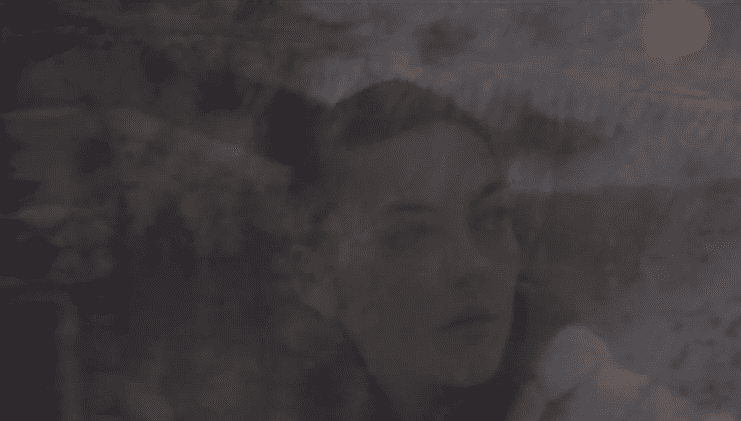The Breakdown is a regular series in which we examine the composition and production of some of our favourite tracks in order to discover what makes them so special. This time, the spotlight falls on ‘Odessa’, released in 2010 by Dan Snaith under his Caribou moniker.
Released as a single in January 2010, Caribou’s ‘Odessa’ heralded the arrival of a new era of Dan Snaith’s creative output. The track would open the Swim LP, released in April of the same year, an album which marked Snaith’s move toward darker, more subdued territory than its predecessor, 2007’s Andorra.
At heart, ‘Odessa’ is based around a very traditional piece of songwriting. The track follows a clear verse-chorus-verse structure in the key of F minor. Snaith’s vocals are the central focus of the track, with his lyrics describing the story of a failing relationship.
The bassline – played using a note sampled from a work by the French acousmatic composer Bernard Parmegiani – is a masterclass in simplicity, consisting of variations on the following pattern:
Those bass notes – a Db, then a C, before resolving to F and finally dropping down to the F an octave below – imply the track’s chord progression, although it’s worth noting that the verse sections don’t actually feature chords, per se. We can infer a progression from the interaction of the vocal and the bassline – the vocal melody begins on a C, which suggests that the first chord is a Db major 7, then extends up to Eb in the fourth bar, implying an F minor 7 over the F bass note – but the sparse harmonic framework leaves room for the vocal melody to explore the Fm scale.
The arrangement also employs tuned percussion hits and FX in the key of Fm in order to help carry the harmonic structure. The prominent sound heard at the beginning of each bar in the intro alternates between playing at a pitch of Ab, and then playing Ab, G and F. Likewise, the bell noise which come in at 1:50 play a C and Ab. The off-beat synth plucks at the end of each bar in the instrumental sections alternate between an Ab and G. Harmonically, the track is relatively simple, but the use of so many different layers creates an incredibly rich and complex sonic space and atmosphere.
The Mix
One of the defining features of ‘Odessa’ is its constantly changing mix, which shifts and evolves almost continuously throughout the track. In so much electronic music, the mixing process is inextricably linked to sound design and production, but in the case of ‘Odessa’ (and the rest of Swim) the mixdown was a distinct process to the composition, recording and production. Snaith has self-effacingly referred to himself as a ‘bedroom producer’ in the past, and the album was already written and recorded by the time he took it to Bryn Derwen Studio in north Wales to mix with regular collaborator David Wrench.
Speaking to us via Skype, Wrench recalls that ‘Odessa’ immediately leapt out at him the first time he heard it: “I knew straight away that it was something special. It was quite obviously going to be the lead track on the record and it quite obviously needed the most attention. It was the first track we mixed. In total we spent a week or so mixing the album and I think we spent at least two days working on that one song.”
Snaith spoke to Electronic Musician shortly after the release of the album about how the unique acoustic environment he’d experienced while undertaking swimming lessons had inspired him to explore the concept of “fluidity or liquidity in the elements of the music”. Odessa contains a multitude of unconventional sound design layers and creative mixing techniques that allude to those sensations.
I knew straight away that it was something special.
Wrench recalls that the idea of an intermittently submerged soundscape was discussed early in the mixing process: “We talked about the way sounds filter and leap out [while swimming]. One of the things he played me as a reference was the Shuggie Otis album Inspiration Information, which is an amazing record, so ahead of its time. I hadn’t really been aware of it before but the way sounds leap around on it is so exciting in the mix.”
Introducing Movement
Wrench recalls that the mix “already sounded pretty good” as soon as they got it up in the studio. A number of sub-mixes were run to ½-inch tape for colour, then the whole lot was brought back into Pro Tools and mixed through the studio’s DDA AMR24 console. Snaith’s vocal was run through an Avalon 737 channel strip for EQ and a very small amount of compression. Reverb came from Bryn Derwen’s EMT 140 plate and EMT 240 gold foil reverb, while the entire mix was fed through the Smart Research C1 stereo compressor for glue and a gentle squeeze (heavy mix bus compression was avoided as “it would have killed the excitement”). It was only after this basic mix was in place that the real hard work began…


05.21 PM
Consistently super interesting column!
03.24 PM
Funny how the manufacturers of the most advanced and expensive hardware have the the crappiest websites 🙂 Anyway, nice article.
08.25 PM
It would be more interesting to talk about the lolbad, overcompressed master…
07.32 AM
I would like to compare with the original?
07.37 PM
Great article. I’d love to hear more about that funky Soviet delay unit.
09.14 PM
love this series. Please break down a Tiger & Woods track one of these days !!
09.18 PM
I second a break down of Tiger & Woods!
01.54 AM
Excellent music journalism, thanks
11.48 PM
Terrific article! One thought though, isn’t Odessa about a woman escaping an abusive relationship? That’s part of its power because she finally finds her voice – and her freedom…
Anyway, Thanks!